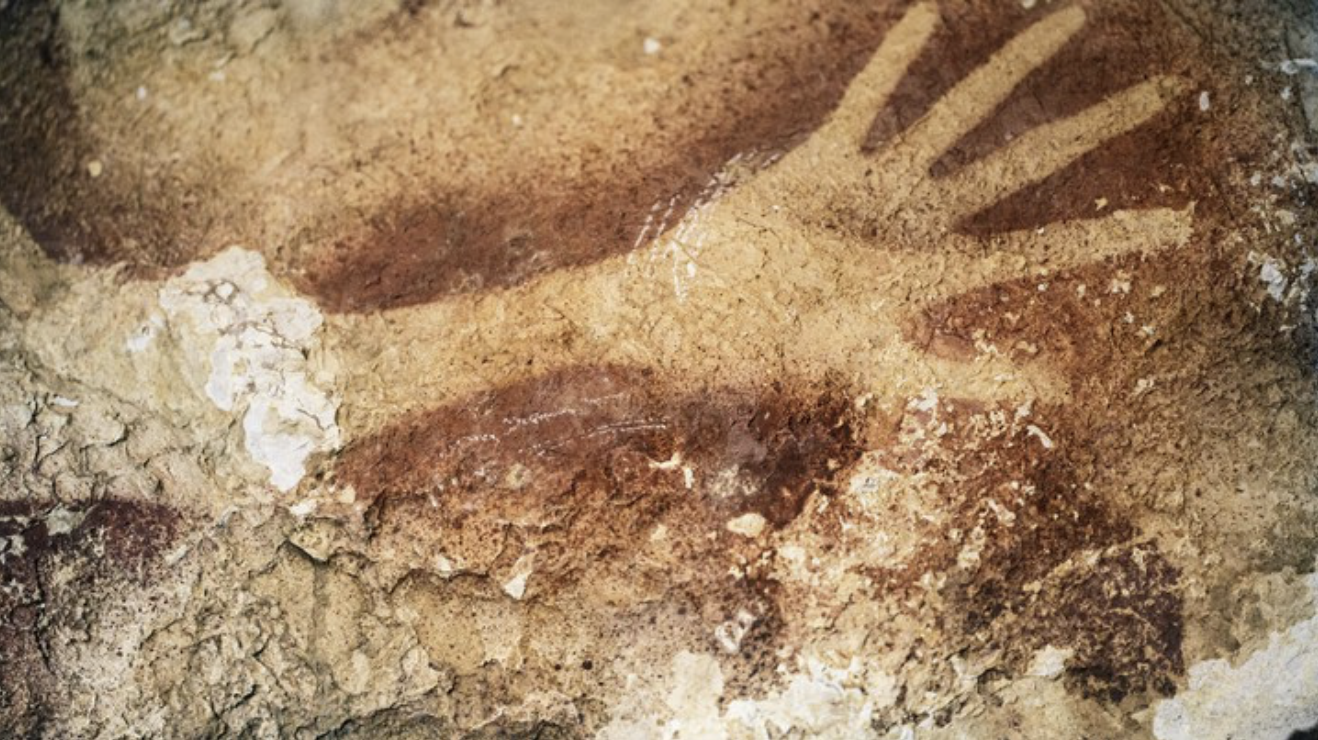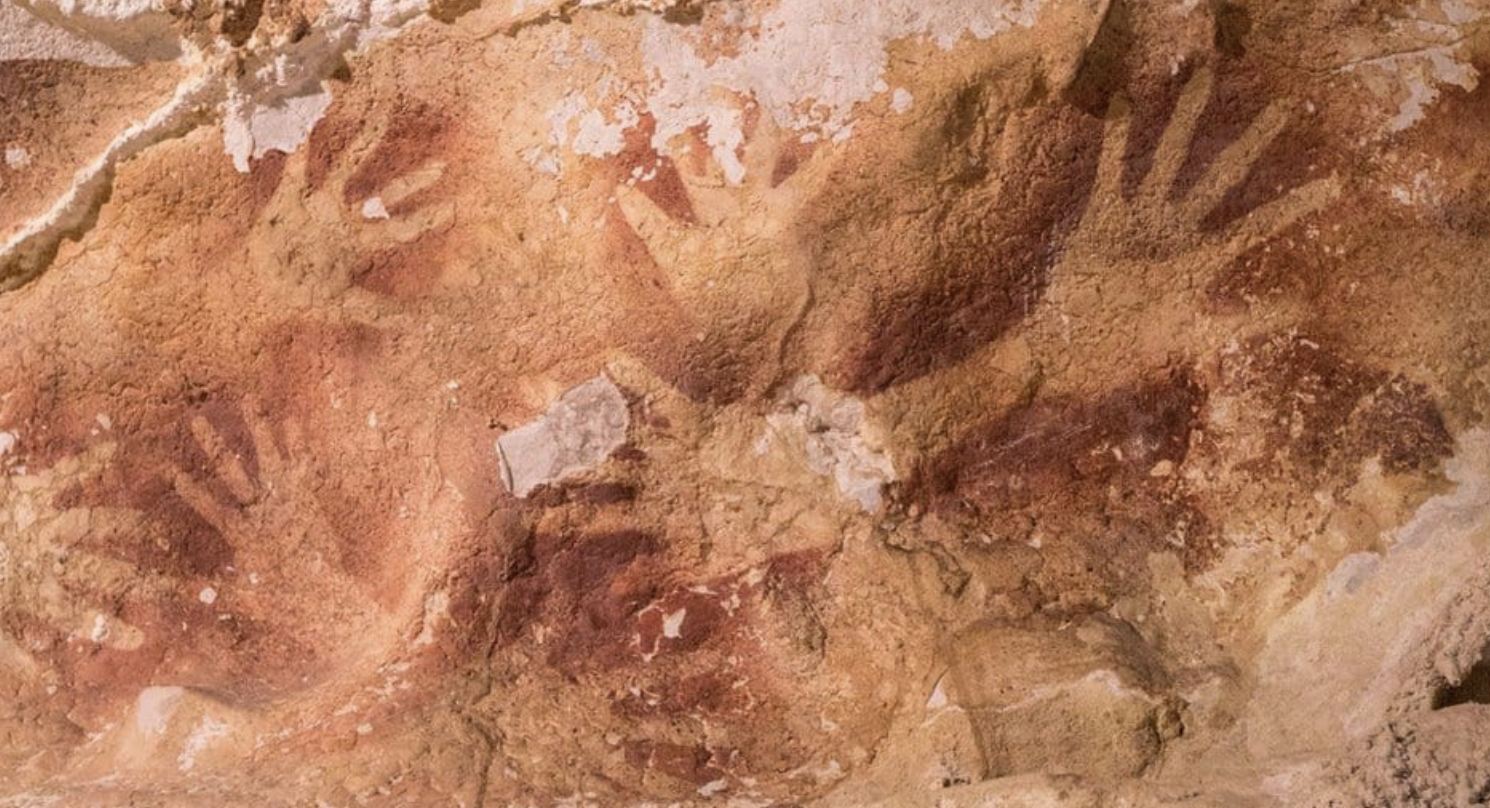WHERE DID ART COME FROM? WHO MADE THE FIRST PIECE OF ART? From pictographs to petroglyphs, cave paintings to carved stone, ceramic and wood - objects have been gathered from around the world and we can only dream of HOW AND WHY each of those objects was formed. What do we know about ancestral art-making in Canada?
*Indigenous art is said to have existed as early as the Ice Age, sometime between 80,000 to 12,000 years ago. Traces of these can be found in the decorative and depicted carvings on stone and bone (ceremonial bowls, effigies and utensils) found in the Lower Fraser region of British Columbia. Just like in any other culture, objects were first created for functional use, for instance, as tools or implements, including objects that had spiritual significance. And because most groups moved during the course of the year, they only had few pieces of purely decorative art. Nevertheless, it can’t be denied that these objects had artistic value. Indigenous art is as varied as the nations or tribes that exist in North America although there are some regional similarities.
The development of Indigenous art in Canada had three distinct periods: prehistoric art, contact or “historic art,” and contemporary art. From images on rock, animal skin, wood and the use of clay and fibre, traditional imagery would soon be influenced by European materials, techniques and motifs but would still embody Indigenous aesthetic values.
Prairie Art
Prairie aboriginal culture in Saskatchewan, Manitoba, Alberta and parts of British Columbia emerged in the 19th century. Art was a combination of First Nations and European culture at a time of westward migration, new hunting opportunities and the fur trade.
Paintings on buffalo hides were the main art form. The Blood, Blackfoot, and the Assiniboine painted geometric motifs, dream images and various symbols. These were seen on their tipis (or teepees) and robes. They also created moccasins, jackets, dresses, leggings and shirts made of deer hide and embellished with porcupine quillwork and beads. Containers made of rawhide called parfleches were also made in different shapes and sizes and in various designs.
Modern developments
Because of policies in the early 19th century, such as the opening of Residential Schools and other attempts to phase out traditional Indigenous culture, Indigenous artistic traditions almost died out. However, Indigenous art experienced a resurgence during WWII. Artists combined modern and traditional themes, symbols and methods. Notable in this period were the works of Norval Morriseau who is considered the grandfather of native art in Canada. He originated Woodland Art (or Woodlands School). The Indigenous Group of Seven of which Morrisseau was a member, formed the Professional National Indian Artists Incorporation. These contemporary artists played a pivotal role in showing that Indigenous art holds a place in mainstream art. Moreover, they kept Indigenous artistic traditions alive and inspired a new generation of Indigenous artists.
Today, various Indigenous art forms from paintings, sculpture and prints to graphic novels and works of mixed media continue to flourish and evolve. Most postmodern art currently explore themes around the relationship between European and Indigenous cultures. Many works reflect and provide a commentary on social and political issues in society as they relate to the Indigenous identity.
(*Source material can be found http://www.native-art-in-canada.com/nativeart.html)
“We have our social imagination: the capacity to invent visions of what should be and what might be in our deficient society, on the streets where we live, in our schools. As I write of social imagination, I am reminded of Jean-Paul Sartre’s declaration that “it is on the day that we can conceive of a different state of affairs that a new light falls on our troubles and our suffering and that we decide that these are unbearable”
- Maxine Greene: Releasing the Imagination. (p. 5).
CONSIDER
1. Why did we make a mark on the wall of a cave?2. How did we decide we needed a vessel for holding things like drinking water?
3. How? Why? Did we move from decoration to metaphor?
4.What is an aesthetic response?


